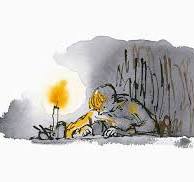A Brand of Writing

A couple of months ago I attended a two-day Masterclass in Food Writing at the British Library (for me, always an awe-inspiring institution). Designed and taught by the food writer Mallika Basu, the class was bracing, illuminating and memorable. It made me feel like a fossil. But somehow it seemed OK to be a fossil in the upbeat, roll-with-the-punches atmosphere that prevailed, as if “fossil” might be an improvised brand in its own right.
For brand was front and centre at all points. Basu is a food writer and commentator with features in national newspapers and food magazines, several books in print as well as her own newsletter — and the list of achievements continues at some length, back to an earlier career in communications — print and electronic. Her energy is palpable. She shares what she knows first-hand, about sites and subscribers and demographics and trends, how “it” works — or doesn’t — now and in the foreseeable future. “It” means writing — in this case writing about food — for money. I’m no food writer, and I credit the workshop with having made that clear to me. It’s not that I won’t write about food, a lifelong pleasure and infinite mine of metaphors. But it won’t be a feature of my brand, should I ever manage to develop one. And that is the point that separates those who can and will become food writers from those who won’t.
The workshop took the idea of brand as given, and went on to use food as a point of departure for a very brief look at the contemporary writing industry — a little of its structure and dynamics, possibilities and pitfalls. I came away with a more sober perspective on contemporary writing and, as noted earlier, a vision of myself as a fossil. I had known the term “brand,” of course. But Basu spoke of brand in a way that made the old chestnuts like “signature style” vanish.
I might have known. It was about 1988 that I read Walter Benjamin’s “The Author as Producer,” an astute analysis of writing as commodity — and he wrote the piece in 1936! I have long admired the work of Vilém Flusser (1920-1991) as well, a writer who confidently predicted, in 1987, that writing would become archaic — a bit like hieroglyphs — in the face of more efficient means of communication (e.g. photography, film, digital imaging). He simultaneously confessed that he himself was irretrievably “stuck” with it: writing was his way of interacting with the world and he was too old to change it. One might say he was, on his own terms and in his own estimation, a fossil.
Why brand? Why can’t we call it style or sensibility? They’re more flexible, and they don’t give off a whiff of seared calf-flesh. That’s fossil talk, of course. It has to be “brand” because it refers to a product, and it can’t be flexible — or not very flexible, anyway. It’s a term of exchange, the way products are identified. Readers have a lot of choice, and want to be confident about what they’ll be getting if they spend their money and/or time. Mallika was abundantly clear about it: at the supermarket you walk past many different kinds of washing powder, all making their pitches. Why should a reader choose yours? In education, the arts of yesteryear have become the “creative industries”: artists, choreographers, composers learn to produce — and promote — their brands. Perfectly logical implications follow, about the importance of projecting confidence in yourself, never suggesting a shred of doubt about your capacity to deliver an exemplary performance in a role you only heard of minutes before. One of the class’s guest speakers discussed the role of research in food writing, saying that he appreciates the strong attraction of examining some topic in depth, but also warning that it can be a strong diversion, “a bit of a rabbit hole,” he said, alluding to the possibility of slipping into another world beyond food writing — disaster for any kind of brand.
I’m stuck with writing, I know. I may also be stuck with an allergy to the idea of my writing being branded, especially by me! I’m stuck with an old value system in which signature style, characteristic metaphor, unique sense of proportion define a writer and attract readers — or don’t. To ask me to dive into the sea of superlatives that is marketing language, toggle back and forth between writing and promoting, is to ask the impossible. Or perhaps that’s exaggerated, fossil talk: maybe it’s no more — or less — than asking for coherence, consistency, consideration for readers…


